|
 Lentinellus castoreus Lentinellus castoreus
SynonymsLentinus castoreus
BiostatusPresent in region - Indigenous. Non endemic
Images (click to enlarge)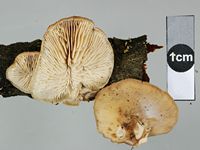
Owner: J.A. Cooper | 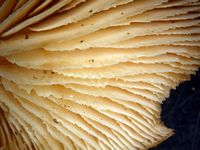
Caption: serrated gill edge
Owner: J.A. Cooper | 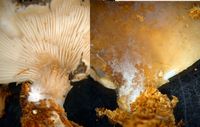
Owner: J.A. Cooper | 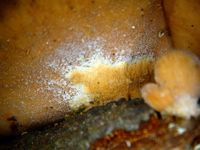
Caption: cap details at point of attachment
Owner: J.A. Cooper | 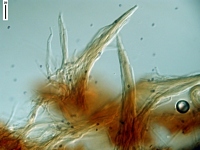
Caption: agglutinated cap hairs.
Owner: J.A. Cooper | 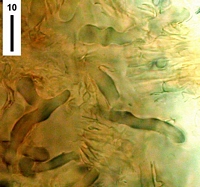
Caption: bosselees hyphae (amyloid bumps) in gill trama
Owner: J.A. Cooper | 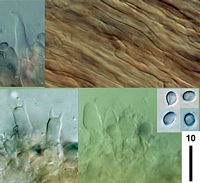
Caption: tope left pleurocystidium. Top right gill trama skeletal hyphae, bottom left basidia, bottom right spores. All in Melzer's.
Owner: J.A. Cooper | 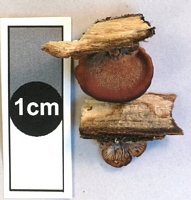
Owner: J.A. Cooper | 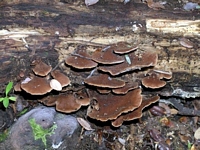
Owner: J.A. Cooper | 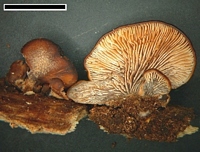
Caption: scale=5mm
Owner: J.A. Cooper | 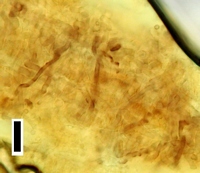
Caption: scale = 20um. Oleiferous amyloid hyphae in hymenium.
Owner: J.A. Cooper | 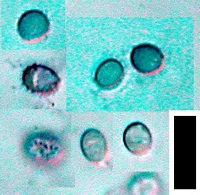
Caption: scale = 10um. Spores in Melzer's
Owner: J.A. Cooper | |
Article: Segedin, B.P. (1996). A new species of Lentinellus (Hericiales, Lentinellaceae) and a revision of taxa attributed to Lentinellus in New Zealand. New Zealand Journal of Botany 34(2): 249-261 (http://www.rsnz.org/publish/abstracts.php).
Notes: No New Zealand material could be found by Horak (1971) or by the present author. Lentinellus
castoreus (Fr.) Konrad & Maubl. (bas. Lentinus castoreus
Fr.) is generally regarded as a synonym of L. ursinus (Miller & Stewart 1971; Pegler 1983;
Breitenbach & Kranzlin 1991).
Article: Massee, G.E. (1899) [1898]. The fungus flora of New Zealand. Transactions and Proceedings of the New Zealand Institute 31: 282–349 Wellington:.
Description: Imbricated, sessile but narrowed behind into a more or less pronounced stem-like base, the
component pilei narrowly fan-shaped or tongue-shaped, margin narrowly incurved, entire or
wavy; sometimes the pelei are resupinate, margin free all round, and the gills radiating from
the centre, at others curled to form a funnel-shaped pileus, flexible, even or wrinkled, rufous,
then yellowish-tawny, 3-12 cm. long; gills crowded, rather narrow, margin irregular,
brownish; spores hyaline, subglobose, 4 µ.
Habitat: On logs, &c.
Distribution: Northern Island, New Zealand. Europe, Cuba, United States.
Notes: Very variable in form and size. The principal distinctive features are the elongated pilei, tan
colour, and glabrous pileus. The figure of this species by Fries (Icones, pl. 175, f. 3) is 14 cm.
broad and the gills 1 cm. broad; it is, however, usually smaller.
|